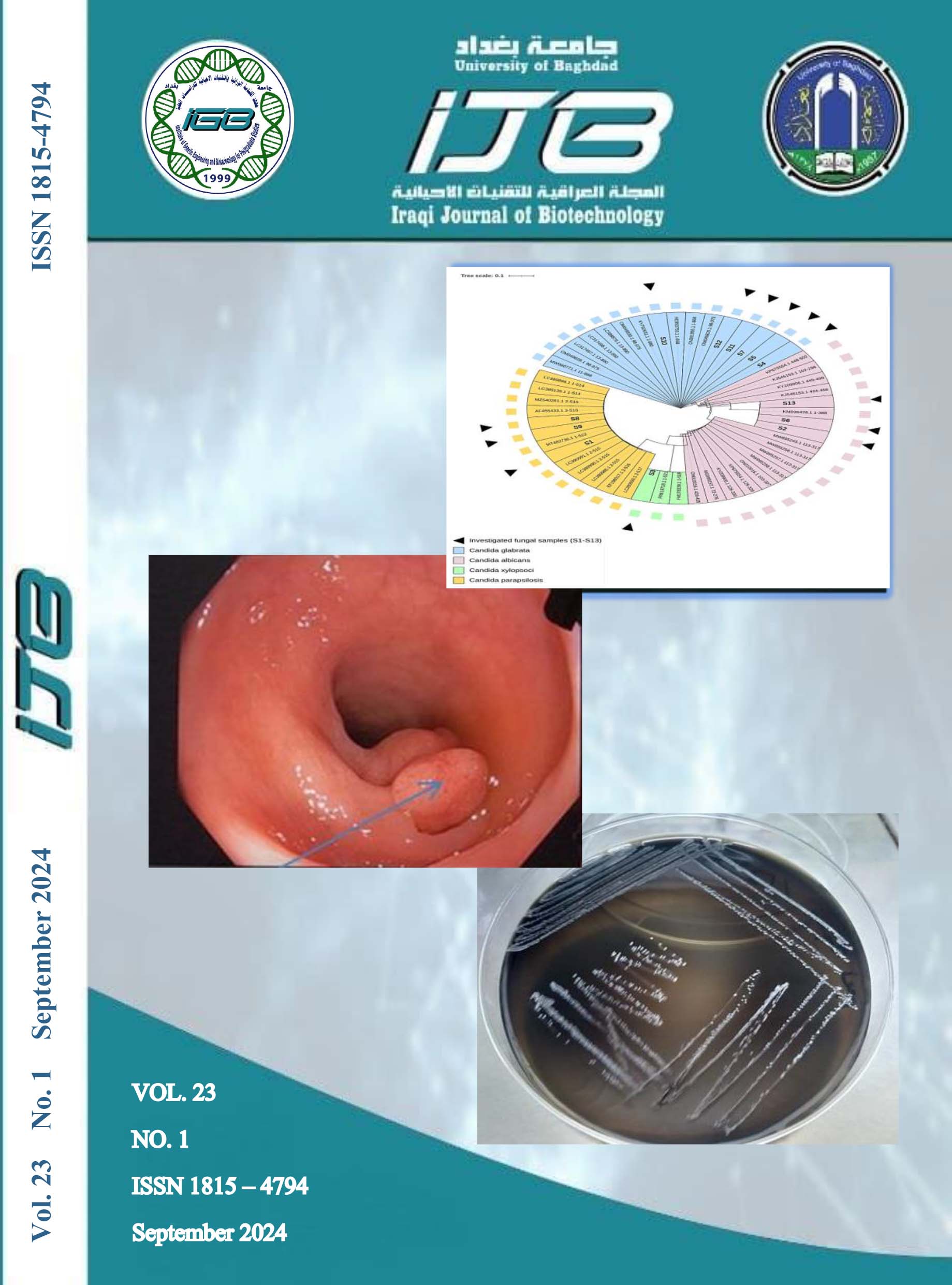Correlation of Bacteria Diversity and Drug Resistance with Colorectal Cancer Patients
Abstract
Colorectal cancer (CRC) is the leading cause of illness and mortality worldwide. The aims of the study is investigation and detection of some bacterial interfering with CRC occurrence and progression . The study conducted between September 2022 till February 2023, a total of 50 specimens were collected from confirmed CRC patients. In addition , 50 stool specimens were collected from healty volunterrs as a control. All specimens were gathered from medical city hospital and gastro-intestinal hospital. Isolation and identification of bacteria in all collected specimens were done by using cultural and differential media ( Blood agar, macconkey agar, mannitol salt agar and Pfizer agar), as well the Vitek- 2 compect system. The bacterial species, in the specimens of control were( Escherichia coli 50 (86.20%), Klebsiella Pneumonia 3(5.17%), Salmonella typhi 2(3.44%), Staphylococcus aureus 1(1.72%), Proteus mirabilis 1(1.72%) and Pseudomonas aeruginosa 1(1.72%), while in the specimens of CRC and polyp were (Escherichia coli 30(38.69%), Streptococcus uberis 6(7.79%), Enterobacter cloacae 4(5.19%), Proteus mirabilis 11(14.28), Streptococcus constellatus pharyneis 1(1.29%), Micrococcus luteus 1(1.29%), Staphlococcus pseudintermedius 1(1.29%), Streptococcus thoraltensis 1(1.29%), Citrobacter freundii 1(1.29%), Streptoccus mutans 1(1.29%), Enterococcus faecium 5(6.49%), Enterococcus faecalis 4(5.19%), Granulicatella elegans 1(1.29%), Enterococcus gallinarum 2(2.59%), Serratia marcescens 1(1.29%), Streptococcus sangunis 1(1.29%), Staphylococcus lentus 1(1.29%), Comamons testosteroni 1(1.29%), Morganella morganii 1(1.29%), Pseudomonas aeruginosa 1(1.29%), Klebsiella pneumonia 2(2.59%). The bacteria which has been shown to be associated and more abundance in the specimense of CRC tissues are Escherichia.coli 30(38.96%), Streptococcus uberis 6(7.79%), Enterobacter cloacae 4(5.19%), Enterococcus faecium 5(6.49%), Enterococcus faecalis 4(5.19%). The relative abundance of (Escherichia coli, Streptococcus uberis, Enterobacter cloacae, Enterococcus faecium, Enterococcus faecalis) a mong CRC specimens. The biofilm formation capability for the tested isolates revealed that (Escherichia coli, Streptococcus uberis and Enterococcus faecalis) were moderate intensity production, while (Enterobacter cloacae and Enterococcus faeium) were weak intensity. The antibiotics susceptibility test (AST) showed that Streptococcus uberis. It was concluded as an Extensive drug resistance (XDR), while (Escherichia coli, Enterococcus faecalis, Enterobacter cloacae, Enterococcus faeium) were considered as Multi Drug resistance (MDR).


